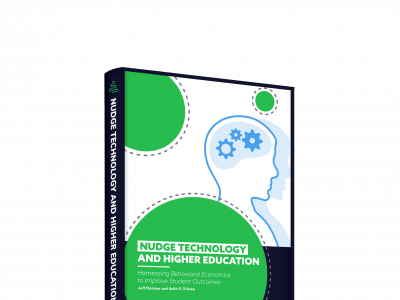Support Students' Long-term and Short-term Goals

Support Students' Long-term and Short-term Goals
Academic journeys rely on students' long-term and short-term goals. For example, this COVID-era is a bit like being in an endless line of stop-and-go traffic. In other words, it's difficult to see an exit beyond this long road called 'COVID.' Students’ academic journeys rely on short-term and long-term goals. Their weeks and months consist of striving for the goals within their academic program. When COVID entered the picture, their goals became theoretical. This is why it’s important to remind students about the things they can do right now to strive for their end goal amidst COVID.
Some students–especially those graduating from their academic program in less than four years–may be thinking about their post-graduation goals. On the opposite side of the spectrum, however, some students spend their weeks thinking simply about their next exam. These are examples of long-term and short-term goals for students.
How texting helps to support students' long-term and short-term goals
 These long-term goals could include two questions. First, students could be considering whether or not they're transferring to another institution for a four-year degree. Second, students might be deliberating on if they're applying for jobs after their two-year degree is finished. For instance, the Community College Research Center reported in a study done this past September that while 80% of first-time students at community colleges intend to earn a bachelor’s degree, only about 29% transfer to a four-year university.
These long-term goals could include two questions. First, students could be considering whether or not they're transferring to another institution for a four-year degree. Second, students might be deliberating on if they're applying for jobs after their two-year degree is finished. For instance, the Community College Research Center reported in a study done this past September that while 80% of first-time students at community colleges intend to earn a bachelor’s degree, only about 29% transfer to a four-year university.
Additionally, COVID has changed students’ desire to pursue a four-year degree or may have altered students’ career trajectory after college. To this point, The Chronicle published a study in March 2020 that reported that 21% of the sampled students said that because of COVID, they’re no longer sure they can afford their first-choice school. Also, 12% of these students said that either they or a family member had health concerns that required the student to change their plans.
The best thing you can do for students in this era, then, is to encourage them to pursue the next step in their career. In other words, all you can do–as a college administrator–is to tell them to “keep putting one foot in front of the other.” For this to be a productive piece of advice, below are four tangible and concrete things you can text out to students to encourage them to take steps towards their academic end goals.
1. Communicate with professors to support students' long-term and short-term goals.
Professors determine students’ grades, which can be considered an element conducive to students' short-term goals. In the same way, though, professors are also experts in their field, which can promote students' long-term goals. Therefore, one way a student can get their tuition’s worth is to reach out to professors with material-oriented questions. Also, professors usually have a hand on the pulse of the field they teach. With this said, if a student is interested in a topic in a class, they have access to the professor for a ten-minute chat about careers in the subject area.
By communicating with professors, students are showing both their dedication to the class and a genuine interest to learn the material. Also, professors can sometimes be the first thread in a student’s network. Thus, if a student expresses interest in careers related to the class, the professor might be willing to give them advice on what they can do to explore careers in their field. This, in turn, would be conducive to the student's long-term goals.
In short, communicating with professors allows students to take steps toward a better grade by showing dedication to the topic. Professors also have the ability to give students advice or input on careers beyond their academic program. With this said, reminding students of this quick tip is likely to allow students to stay focused on their goals.
2. Remember to send out internship applications.
This past summer, many students had internships lined up. COVID’s impact on businesses, however, induced many internship programs to be canceled.
Also, beyond internships, typical summer jobs that college students usually take up, such as working at restaurants, were temporarily or are still stifled. Both of these situations most likely resulted in increased stress among students for two reasons:
- Students lost an opportunity to pursue their goal post-undergrad career by losing their internship, and
- Students lost a source of income that would promote students’ financial stability.
However, when companies moved their workplaces online, most moved their internships online. This means that there are more online internships available than many may think. If students want to beef up their resume, this COVID-induced online environment is the ideal time for internships. For instance, their remote internship won’t cost them transportation fees.
3. Think about long-term academic goals for students.
Some students intend to transfer from a two-year academic program to a four-year academic program in the near future. While it’s important to focus on passing the classes they’re currently enrolled in – we’ve all been there! – there are a few things that students should keep in the back of their minds so that they don’t miss application deadlines.
For example, a large number of four-year universities have early action admission. This means that application deadlines come sooner. While submitting applications is tedious, there are studies that show that early admission applications have an admissions benefit of about 4-6%.
This goes for graduate schools as well. If students intend to extend their academic career beyond a four-year degree, they may have to take the GRE or GMAT. They also have to do all of the legwork in graduate school applications. This includes requesting formal transcripts and writing their application essays.
Although, none of these things can be crammed and finished the day before they’re due – or even the week before. With this said, now is the time for students to review application requirements. From here, they can reach out to people who can help them answer their questions and create an execution plan.
4. Remind all students that they are not alone in the COVID-era.
Students are dealing with unique situations right now during COVID. As a result, the pandemic is confusing students' long-term and short-term goals. Thus, in this era, it’s important to remind your students that they are not alone in dealing with these challenges–and there is, in fact, help that you can offer them. One thing you can do to reassure students that they’re not alone is to reach out and remind them of the resources that your institution offers.
For example, if it’s finals week, you could send a text out with a list or a link to online tutoring resources. Or, you can take advantage of the overarching banner of national mental health month and send out a list of mental health resources that are available to students. In this way, you’re answering a need that students might have–and you're taking steps that will allow them to progress towards a more enriched, more successful academic career.
Learn more
You might be a college administrator who is frustrated with how COVID has confused your students’ academic - and even career - trajectories. To further explore the topic in terms of career development, register to attend our upcoming webinar.
If you’re curious as to how texting can improve a student’s academic journey and help support students' long-term and short-term goals, read more from this blog written by an education expert here.

Related Resources
Communicating effectively with your campus communities is of paramount importance right now
If you’d like to learn how Signal Vine can help, please join us for a demo.

